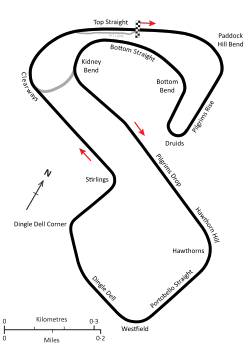| 1961 Silver City Trophy | |||
|---|---|---|---|
| Non-championship race in the 1961 Formula One season | |||
 | |||
| Race details | |||
| Date | 3 June 1961 | ||
| Official name | Silver City Trophy | ||
| Location | Brands Hatch | ||
| Course | Permanent racing facility | ||
| Course length | 4.265 km (2.65 miles) | ||
| Distance | 76 laps, 311.345 km (201.4 miles) | ||
| Pole position | |||
| Driver | Lotus-Climax | ||
| Time | 1:42.8 | ||
| Fastest lap | |||
| Driver | | Lotus-Climax | |
| Time | 1:42.0 | ||
| Podium | |||
| First | Lotus-Climax | ||
| Second | Lotus-Climax | ||
| Third | BRM-Climax | ||
The sixth Silver City Trophy was a motor race, run to Formula One rules, held on 3 June 1961 at Brands Hatch Circuit. The race was run over 76 laps of the circuit, and was won by British driver Stirling Moss in a Lotus 18/21.
The race was overshadowed by a fatal accident during qualifying when Shane Summers crashed his Cooper T53 into the concrete entrance to the paddock road tunnel.